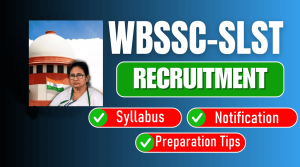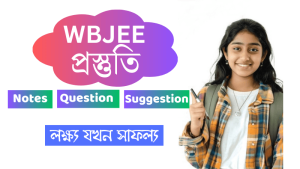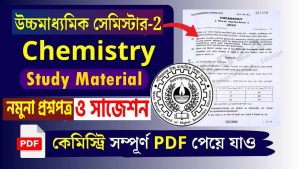The NCERT Syllabus for Class 9 Geography is provided here for students to study and prepare for their final exams. Geography is a subject which initiates the learner into the study of their region, state and country in the global context.
Chapter 1: India
Curricular goals: CG-4 Develops an understanding of the inter-relationship between human beings and their physical environment and how that influences the livelihoods, culture, and the biodiversity of the region
Competency: C-4.1 Locates physiographic regions of India and the climatic zones of the world on a globe/map
Learning outcome:
- Examine how the location of an area impacts its climate and time with reference to longitude and latitude.
- Explore and analyses the trading and cultural relationships of India with its neighbouring countries.
- Evaluate the situation & reasons that made 82.5E* longitude as Time meridian of India.
- Examine how location of India enables its position as a strategic partner in the subcontinent.
- Justify the reasons for the differences in climatic conditions, local and standard time.
- On map of India Locate physiographic regions of India and the climatic zones of the world on a globe/map.
- Use GeoGebra, Google earth to represent and justify the reasons for the differences in climatic conditions, local and standard time.
- Brainstorming strategy for inferring conditions and relationships of the people living in states that are sharing border with the neighboring countries impact trade and culture.
- Make a PPT presentation on the inter-relationship between human beings and their physical environment and how that influences the livelihoods, culture, and the biodiversity of the region.
Chapter 2: Physical Features of India
Curricular goals: CG-4 Develops an understanding of the inter-relationship between human beings and their physical environment and how that influences the livelihoods, culture, and the biodiversity of the region.
Competency: C-4.2 Explains important geographical concepts, characteristics of key landforms, their origin, and other physical factors of a region.
Learning outcome:
- Justify how the Physical Features of India influences the livelihoods, culture, and the biodiversity of the region.
- Examine the geological process that played a crucial role in the formation of diverse physical features in India.
- Analyse the conditions and relationships of the people living in different physiographic areas.
- Use Art integrated strategies like gallery walk/Model making to demonstrate how physical features make India a sub-continent.
- Group work to discuss the lives and relationships amongst physiographic areas.
- Brainstorming and make a comparison of India’s Physical features with another country.
- presentation using different modes.
Chapter 3: Drainage
Curricular goals: CG-4 Develops an understanding of the inter-relationship between human beings and their physical environment and how that influences the livelihoods, culture, and the biodiversity of the region
Competency: C-4.5 Critically evaluates the impact of human interventions on the environment, including climate change, pollution, shortages of natural resources (particularly water), and loss of biodiversity; identifies practices that have led to these environmental crises and the measures that must be taken to reverse them
Learning outcome:
- Examine the information about different lakes and infer on their contribution to Indian ecology.
- Present creative solutions to overcome the water pollution also to increase the contribution of water bodies to Indian economy.
- Identify the river systems of the country and explain the role of rivers in human society
- Choice Board strategy where each group to take up one river and focus on the areas they serve and the impact on Economy of that area.
- Students will prepare a chart on lakes.
- Slogan writing, poster making/ save River songs/ to bring awareness on water pollution and suggest solutions
Chapter 4: Climate
Curricular goals: CG-4 Develops an understanding of the inter-relationship between human beings and their physical environment and how that influences the livelihoods, culture, and the biodiversity of the region.
Competency: C-4.3 Draws interlinkages between various components of the physical environment, such as climate and relief, climate and vegetation and wildlife.
Learning outcome:
- Analyses and infer the effect of monsoon winds on rainfall of the Indian subcontinent.
- Analyses the temperatures between plateau region, Himalayan region, desert region and coastal region.
- Enumerate and summarize the reasons for the wide difference between temperatures at different
- Use Mind map/ graphic organizers to enumerate and summarize the reasons for the wide difference between the day and night temperatures at different geographical locations of India.
- Collect Newspaper reports for knowing the weather status.
- Prepare and present mock drills on climate change and protocols
Chapter 5: Natural Vegetation and Wildlife
Curricular goals: Inter disciplinary project
Competency: Inter disciplinary project with chapter no IV of History “Forest, Society and Colonialism.
Learning outcome: Refer annexure II
Chapter 6: Population
Curricular goals: CG-4 Develops an understanding of the inter-relationship between human beings and their physical environment and how that influences the livelihoods, culture, and the biodiversity of the region
Competency: C-4.6 Develops sensitivity towards the judicious use of natural resources (by individuals, societies, and nations) and suggests measures for their conservation.
Learning outcome:
- Analyses and infer the reasons behind the uneven distribution of population in India with specific reference
- to UP & Rajasthan and Mizoram and Karnataka
- Enlist the factors that affect the population density
- Use a Pie -diagram to depict the population distribution in India.
- Group discussion and presentation on reasons behind the uneven distribution of Population







